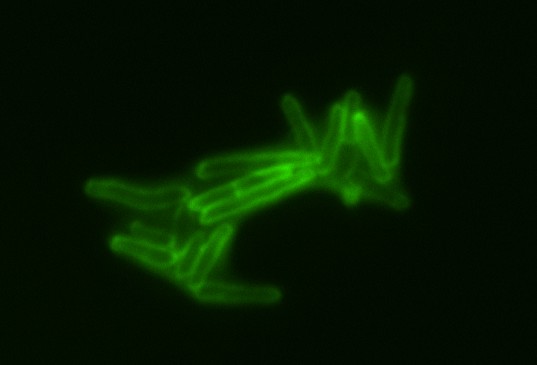 TB is the second deadliest pathogen worldwide behind HIV/AIDS, killing more than 1.3 million people in 2012, according to the World Health Organization. In the United States, overall rates of TB infection have been declining, although rates among people born outside the U.S. are growing, and TB is a major cause of death in people with HIV/AIDS, according to the Centers for Disease Control and Prevention.
TB is the second deadliest pathogen worldwide behind HIV/AIDS, killing more than 1.3 million people in 2012, according to the World Health Organization. In the United States, overall rates of TB infection have been declining, although rates among people born outside the U.S. are growing, and TB is a major cause of death in people with HIV/AIDS, according to the Centers for Disease Control and Prevention. The novel approach to killing the tuberculosis bacterium blocks the secretion of two small molecules, mycobactin and carboxymycobactin, called siderophores, according to the study, published Jan. 14, 2013, on the Proceedings of the National Academy of Sciences website. These siderophores move in and out of cells scavenging iron, an essential metal for replication of Mtb from the environment.
This new discovery showed that disrupting this cycle “delivers a one-two punch,” the researchers write, by restricting the bacteria’s access to iron and loading its cell with a toxic level of siderophores. The siderophore-recycling mutant of Mtb was not pathogenic anymore in mice infection experiments as described in a previous paper in PLoS Pathogens published in January 2013 by the Niederweis lab.
“We were very surprised,” says senior author Michael Niederweis, Ph.D., a professor in the Department of Microbiology in UAB’s School of Medicine. “We did not suspect such a strong virulence defect.”
By disrupting recycling, siderophores are trapped in the bacterial cell and accumulate, where they become toxic, possibly by removing iron from essential proteins in the cell, Niederweis says.
The concept of targeting siderophore recycling is novel and appears to be advantageous compared to inhibiting siderophore biosynthesis, which is easily overcome by Mtb utilizing alternative iron sources such as heme. The discovery of other proteins involved in iron scavenging fuels cautious optimism. “This is promising, but we have no proof yet that this might work in humans,” Niederweis says. “Looking at in vitro and mice data, this pathway is really important for Mtb.”
The Alabama Drug Discovery Alliance at UAB is funding the continuation of this research so Niederweis and collaborators at Southern Research can understand the siderophore transport system more completely and to look for compounds that disrupt the membrane proteins.